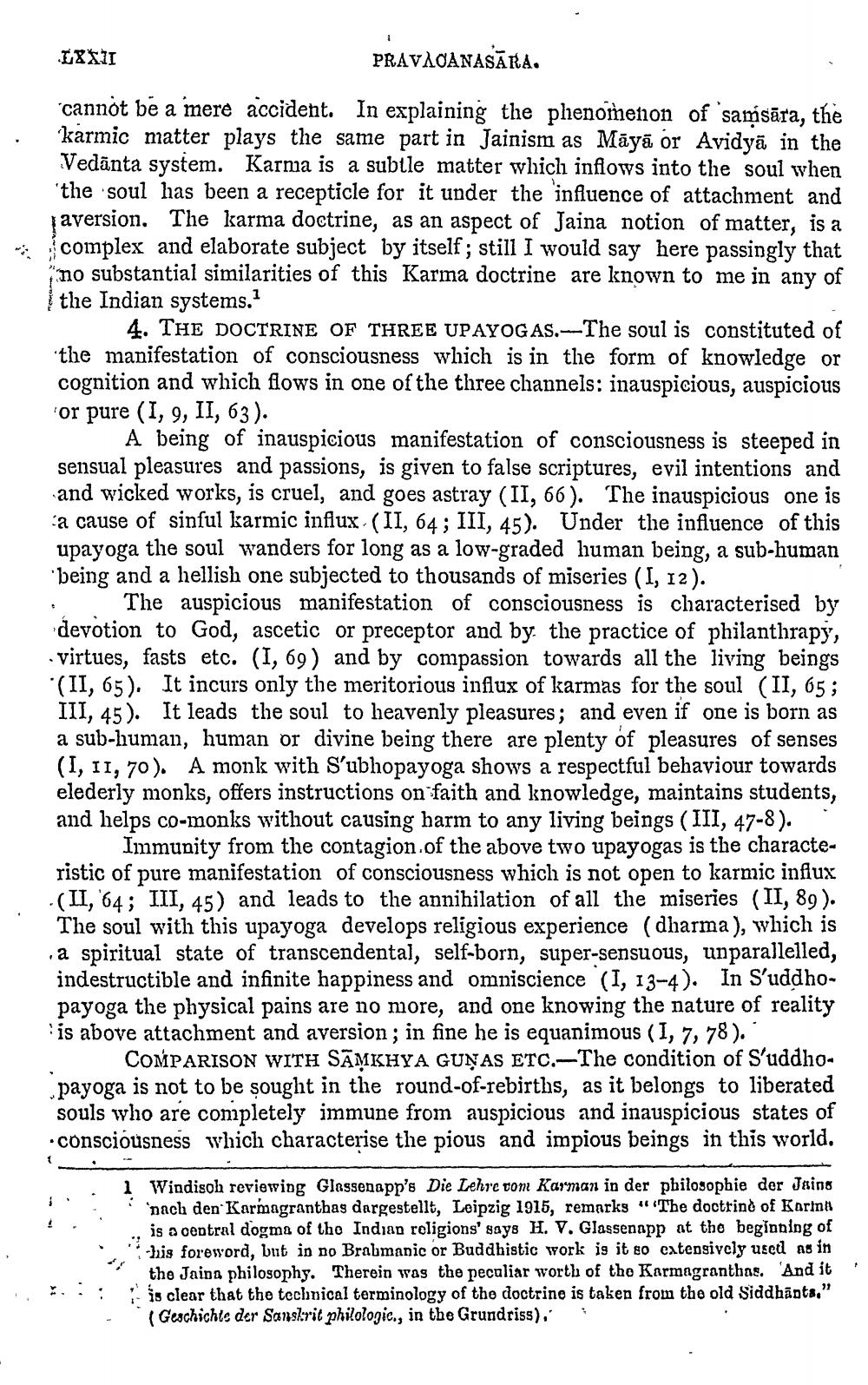________________
LXXII
PRAVACANASĀRA.
cannot be a mere accident. In explaining the phenomenon of samsara, the karmic matter plays the same part in Jainism as Maya or Avidya in the Vedanta system. Karma is a subtle matter which inflows into the soul when 'the soul has been a recepticle for it under the influence of attachment and aversion. The karma doctrine, as an aspect of Jaina notion of matter, is a complex and elaborate subject by itself; still I would say here passingly that no substantial similarities of this Karma doctrine are known to me in any of the Indian systems.1
4. THE DOCTRINE OF THREE UPAYOGAS.-The soul is constituted of the manifestation of consciousness which is in the form of knowledge or cognition and which flows in one of the three channels: inauspicious, auspicious or pure (I, 9, II, 63).
A being of inauspicious manifestation of consciousness is steeped in sensual pleasures and passions, is given to false scriptures, evil intentions and and wicked works, is cruel, and goes astray (II, 66). The inauspicious one is a cause of sinful karmic influx. (II, 64; III, 45). Under the influence of this upayoga the soul wanders for long as a low-graded human being, a sub-human 'being and a hellish one subjected to thousands of miseries (I, 12).
The auspicious manifestation of consciousness is characterised by devotion to God, ascetic or preceptor and by the practice of philanthrapy, virtues, fasts etc. (I, 69) and by compassion towards all the living beings (II, 65). It incurs only the meritorious influx of karmas for the soul (II, 65; III, 45). It leads the soul to heavenly pleasures; and even if one is born as a sub-human, human or divine being there are plenty of pleasures of senses (I, II, 70). A monk with S'ubhopayoga shows a respectful behaviour towards elederly monks, offers instructions on faith and knowledge, maintains students, and helps co-monks without causing harm to any living beings (III, 47-8).
Immunity from the contagion of the above two upayogas is the characteristic of pure manifestation of consciousness which is not open to karmic influx (II, 64; III, 45) and leads to the annihilation of all the miseries (II, 89). The soul with this upayoga develops religious experience (dharma), which is a spiritual state of transcendental, self-born, super-sensuous, unparallelled, indestructible and infinite happiness and omniscience (I, 13-4). In S'uddhopayoga the physical pains are no more, and one knowing the nature of reality is above attachment and aversion; in fine he is equanimous (1, 7, 78).
COMPARISON WITH SAMKHYA GUNAS ETC.-The condition of S'uddhopayoga is not to be sought in the round-of-rebirths, as it belongs to liberated souls who are completely immune from auspicious and inauspicious states of .consciousness which characterise the pious and impious beings in this world.
Windisch reviewing Glassenapp's Die Lehre vom Karman in der philosophie der Jains nach den Karmagranthas dargestellt, Leipzig 1915, remarks "The doctrine of Karina is a central dogma of the Indian religions' says H. V. Glassenapp at the beginning of his foreword, but in no Brahmanic or Buddhistic work is it so extensively used as in the Jaina philosophy. Therein was the peculiar worth of the Karmagranthas. And it is clear that the technical terminology of the doctrine is taken from the old Siddhants," (Geschichte der Sanskrit philologic., in the Grundriss)."




